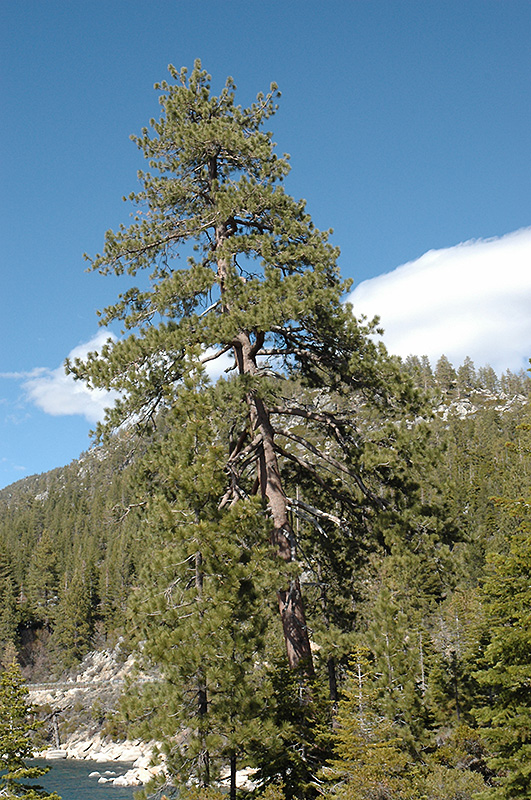Height: 90 feet
Spread: 40 feet
Sunlight:
![]()
Hardiness Zone: 4
Description:
One of the larger pines for the landscape, this native of the west coast can grow to become a bold, imposing specimen, although it grows slowly enough for general landscape use as well; best used for larger properties
Ornamental Features
Jeffrey Pine is primarily valued in the landscape for its ornamental globe-shaped form. It has bluish-green evergreen foliage. The needles remain bluish-green throughout the winter. The rough brown bark adds an interesting dimension to the landscape.
Landscape Attributes
Jeffrey Pine is an evergreen tree with a strong central leader and a more or less rounded form. Its strikingly bold and coarse texture can be very effective in a balanced landscape composition.
This is a relatively low maintenance tree. When pruning is necessary, it is recommended to only trim back the new growth of the current season, other than to remove any dieback. It has no significant negative characteristics.
Jeffrey Pine is recommended for the following landscape applications;
- Shade
- Windbreaks and Shelterbelts
Planting & Growing
Jeffrey Pine will grow to be about 90 feet tall at maturity, with a spread of 40 feet. It has a high canopy with a typical clearance of 7 feet from the ground, and should not be planted underneath power lines. As it matures, the lower branches of this tree can be strategically removed to create a high enough canopy to support unobstructed human traffic underneath. It grows at a medium rate, and under ideal conditions can be expected to live to a ripe old age of 100 years or more; think of this as a heritage tree for future generations!
This tree should only be grown in full sunlight. It does best in average to evenly moist conditions, but will not tolerate standing water. It may require supplemental watering during periods of drought or extended heat. It is not particular as to soil type or pH, and is able to handle environmental salt. It is somewhat tolerant of urban pollution. Consider applying a thick mulch around the root zone in both summer and winter to conserve soil moisture and protect it in exposed locations or colder microclimates. This species is native to parts of North America.

